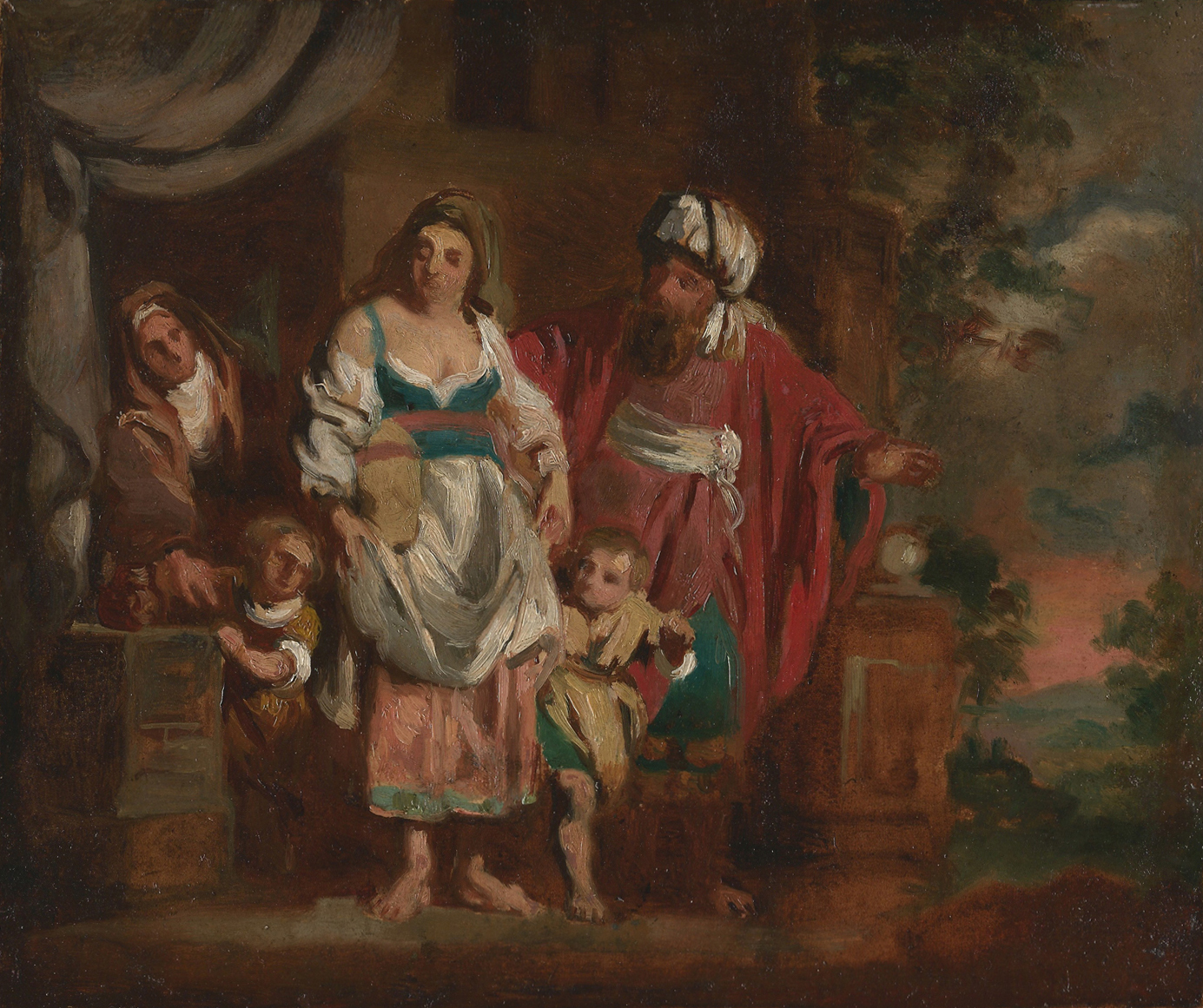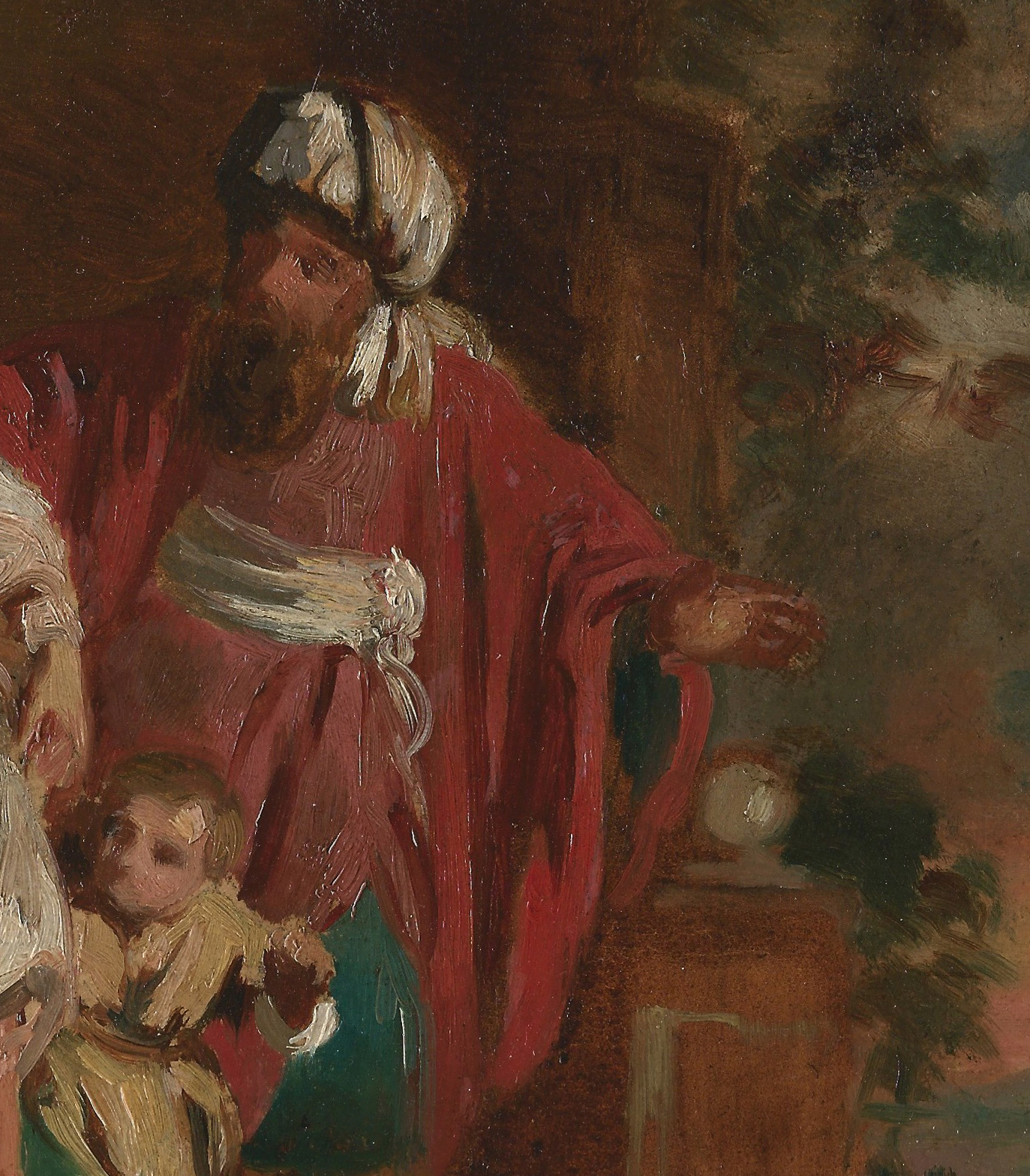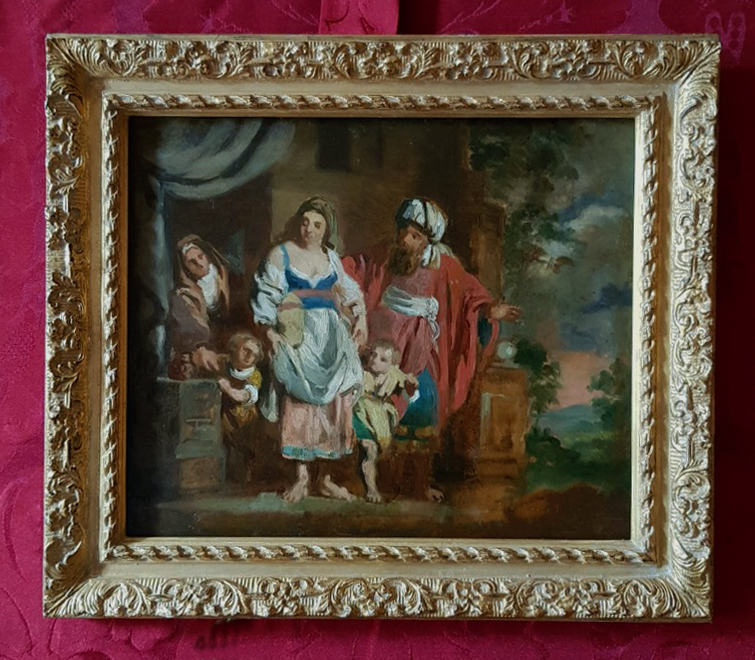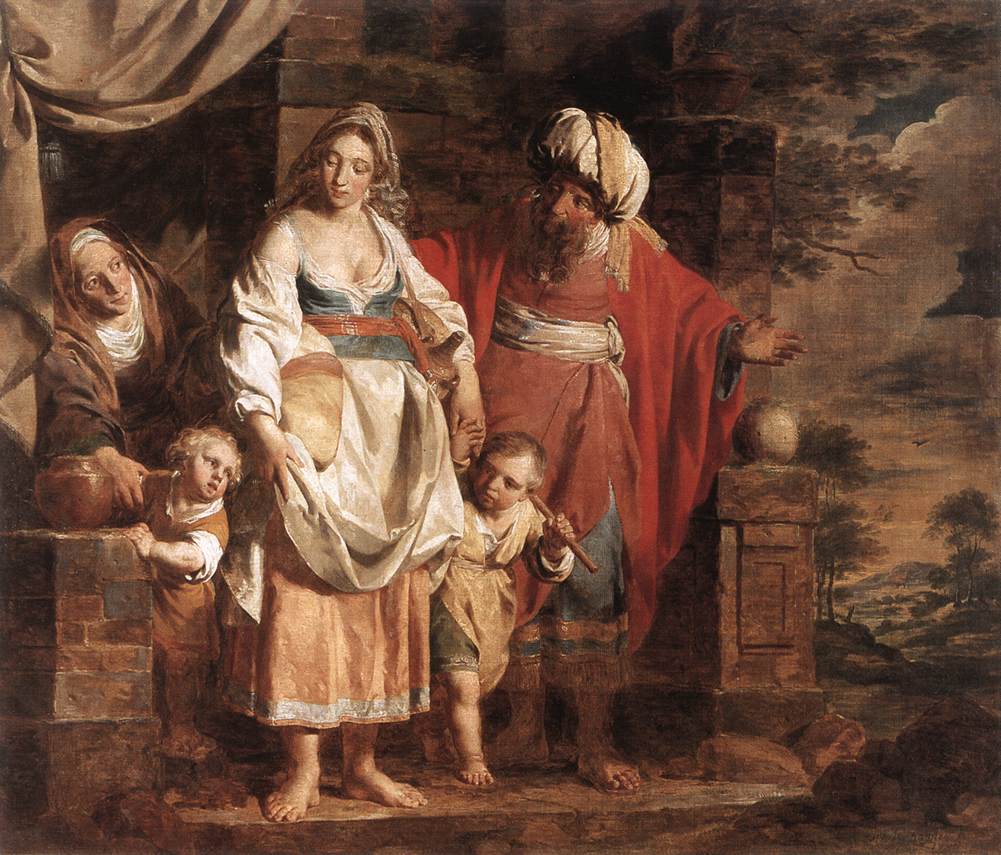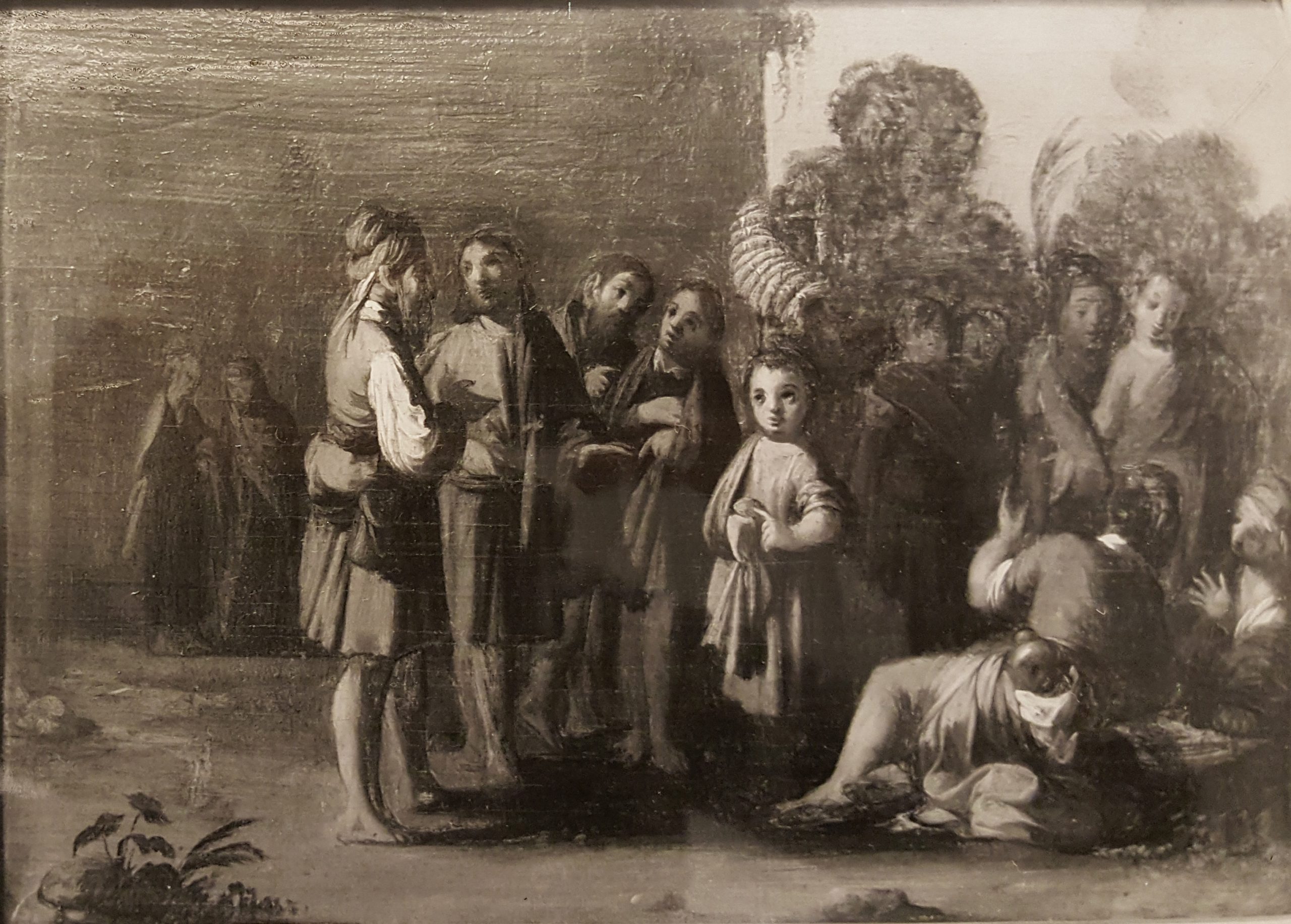PIETER JOZEF VERHAGHEN(Aarschot 1728 – 1811 Louvain)
Pieter Jozef Verhaghen (Aarschot 1728 – 1811 Louvain)
Hagar and Ishmael Banished by Abraham
Oil on paper, mounted on panel, 237 x 281 mm (9.3 x 11.1 inch); painted area 228 x 270 mm (9 x 10.6 inch); presented in a carved and gilt frame of 18th-century model
Provenance
Private collection, The Netherlands
***
Verhaghen is considered the leading painter of Brabant during the eighteenth century. A series of recent studies has led to something of a new attitude towards Flemish painting in this period, which had until recently been considered rather inferior, because of its perceived lack of innovation. The young Pieter Jozef Verhaghen was discovered in 1741 by the travelling artist Jean-Baptist van den Kerckhoven, who had come to Aarschot to restore Caspar de Crayer’s Adoration of the Magi in the city’s church of Our Lady.1 From his native town Pieter Jozef moved to Antwerp in 1744, where he studied with Balthasar Beschey (1708–1776), and in addition followed courses in drawing after life models at the Academy. In the early 1770s Verhaghen was deeply influenced by extensive travelling in Italy, where he visited the artistic centres of Turin, Milan, Parma, Piacenza, Bologna, Rome and Naples.
The Austrian Empress Maria Theresa bestowed Verhaghen with the honour of court painter in 1773, and or a decade and a half the artist experienced his most productive and successful phase, during which he executed many important commissions for monasteries and abbeys. The Post-Revolutionary years and the closure of religious institutions however subdued his former success.
This powerful sketch relates to one of Verhaghen’s most celebrated compositions, the painting of the same subject executed in 1781 for the Abbey of Tongerlo, and now in the Royal Museum of Fine Arts in Antwerp (see fig.).2 Although art-historical research into the oeuvre of Verhaghen is still in its infancy and known bozzettos and oil sketches by the artist are rare, the practice of making small-scale studies in oil to show prospective clients how an eventual large-scale work would appear, was well established in Flanders, with Rubens the most notable example.
The loose and spontaneous brushwork and the ‘extra’ space along the upper and lower edges of the sketch (more condensed in the finished picture) characterise this charming work as a bozzetto. The influence of Jacob Jordaens (1593–1678) is particularly noticeable in the present study. The handling is comparable to an oil sketch of Joseph’s Dream by the artist (see fig.).3 Verhaghen also made reduced versions of large-scale paintings, such as his composition of the Holy Family with Sts Zacharias, Elizabeth and the Infant St John the Baptist, of which a large-scale canvas is in the Museum Vanderkelen-Mertens in Louvain, and a reduced-scale version appeared on the art market in 1998.4
We are grateful to Prof. Dr Hans Vlieghe for confirming Verhaghen’s authorship.5
SOLD
1. For the artist, see V. Vandekerchove and P. Carpreau (eds.), Pieter-Jozef Verhaghen (1728-1811): in het spoor van Rubens, exh. cat. Louvain (Museum M) 2011.
2. Oil on canvas, 168 x 195 cm, E. Maréchal and L. de Jong, The Royal Museum of Fine Arts Antwerp, Antwerp 1990, p. 73.
3. Oil on panel, 120 x 170 mm, collection Bankhaus Burckhardt und Bröckelschen A.G., Düsseldorf, 1974, recorded in a photograph in the Rijksbureau voor Kunsthistorische Documentatie (RKD), The Hague.
4. Respectively oil on canvas, 129 x 149 cm, inv. no. S/15/V and oil on canvas, 59.3 x 78 cm, Bernaerts, Antwerp, 30 March 1998, lot 170, repr.
5. Email correspondence, 3 August 2017. Prof. Vlieghe, who describes the work as a ‘good oil sketch by Verhaghen’, noted the relationship to several other studies by the artist. Dr Peter Carpreau however communicated in an email of 11 May 2017 that he does not know any oil studies by Verhaghen, and considered the possibility it is the work of a later follower.
